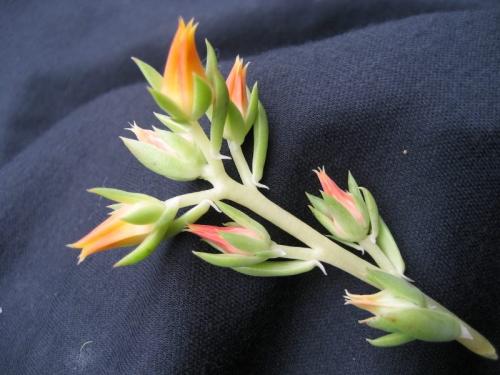PANICULATA var. PANICULATA
Synonyms:
Cotyledon grayi Baker (1869) / Echeveria grayi (Baker) Morren (1874) (nom. illeg., Art. 52.1).
Series Thyrsiflorae
Type : Wislizenus 170, Cosiquiriachi, Chihuahua, Mexico.
Etymology : For the shape of the inflorescence.
Distribution : Mexico (Aguascalientes, Chihuahua, Durango, Zacatecas)
First Description by Gray in Plantae Wrightianae 1: 76. 1850 :
Rosette leaves obovate-lingulate, 5 - 7.5 cm long.
Bracts few, scattered, subopposite, smaller, 1.2 - 2.5 cm long, lanceolate- canaliculate, acute, mucronate.
Flowers in a loose, elongate panicle, terminal flowers on very short peduncles, the lateral ones mostly with rather long, bracteate peduncles, bracteoles small, linear.
Corolla 12 mm long, petal apex slightly recurved, sepals half as long as petals.
Cytology : n = 28.
Note :
The inflorescences of E. paniculata are variable, either with one-flowered and two-flowered branches and with a terminal flower opening before some below, or with inflorescence branches as elongate (one- or) few-flowered cincinni, the lower flowers subsessile, the uppermost (including the solitary) with long pedicels (Moran in Cactus and Succulent Journal US 40(1): 39. 1968).
In habitat, Durango :
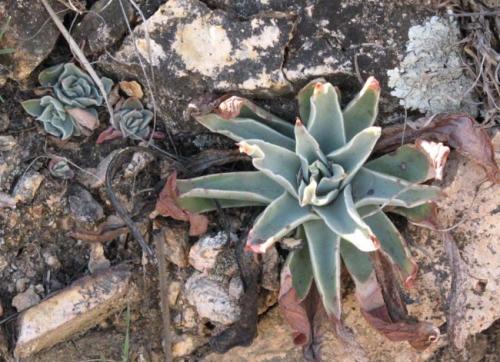
Plant in cultivation :
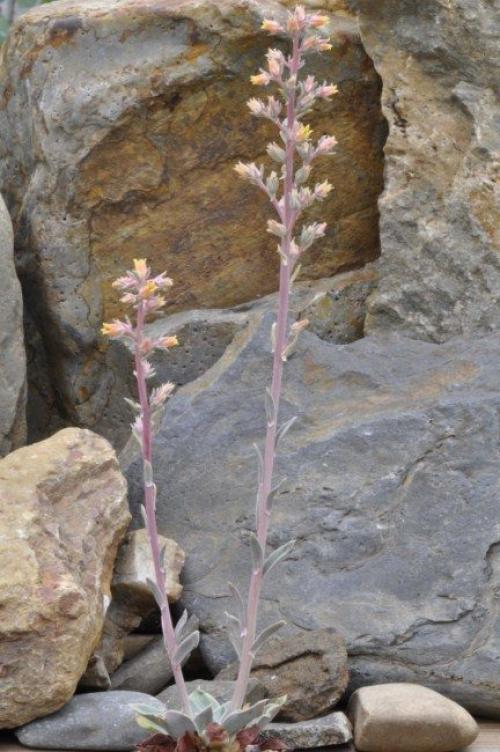
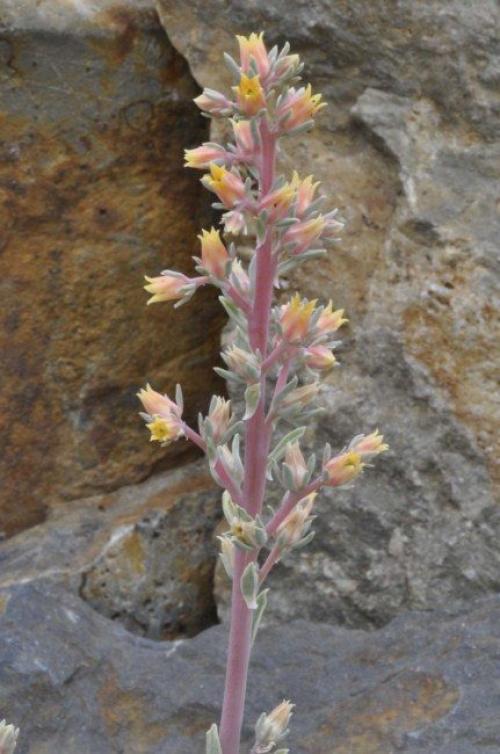
Photos Mieke Geuens
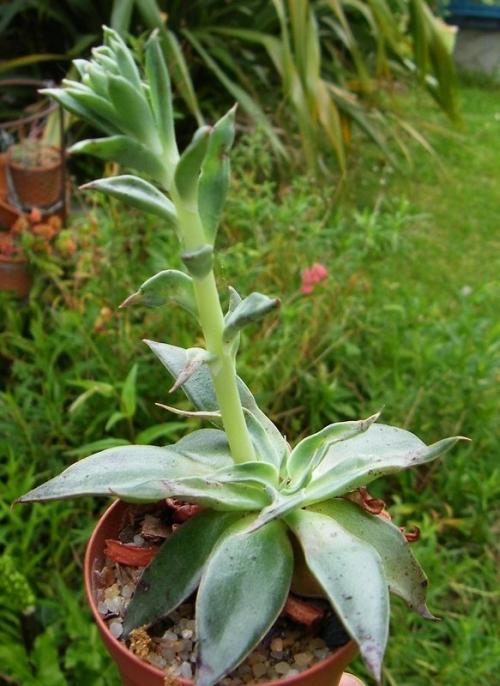
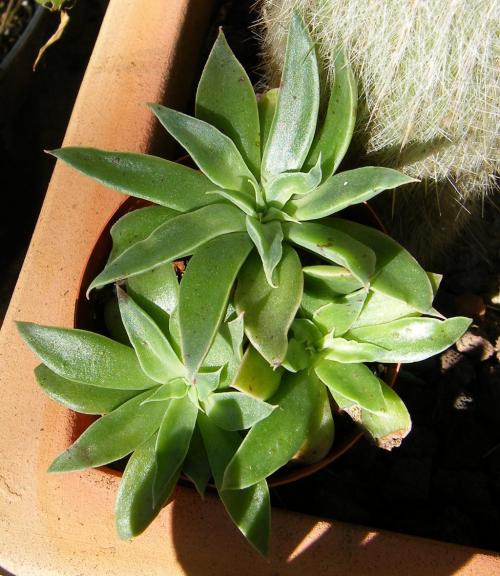
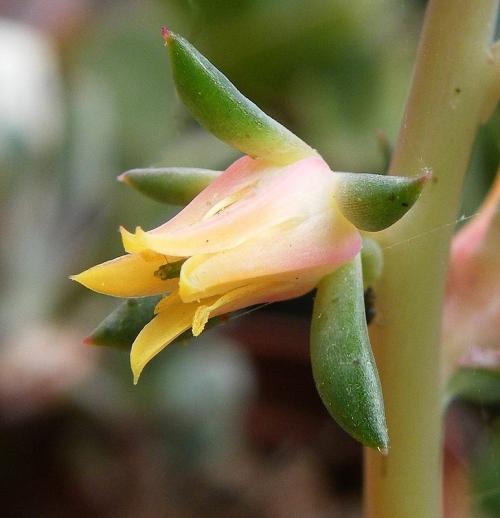
E. paniculata, Durango, Mazatlan
Photos Emmanuelle Aubé
